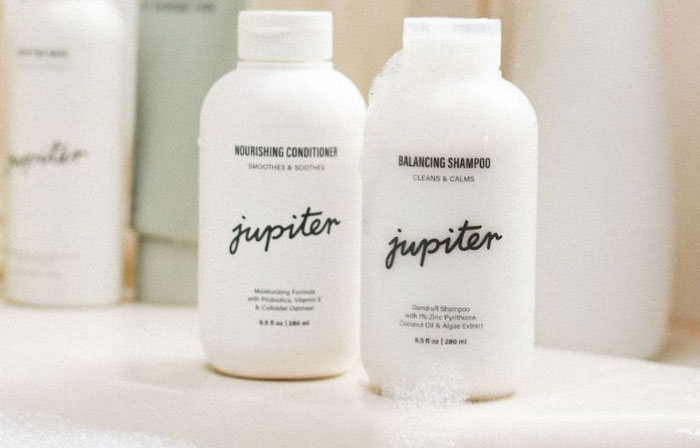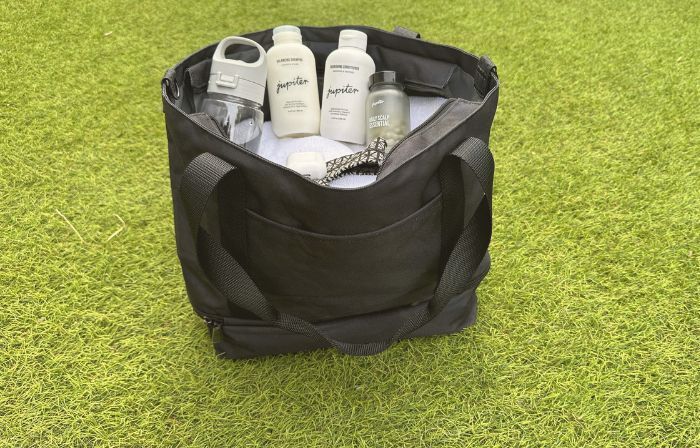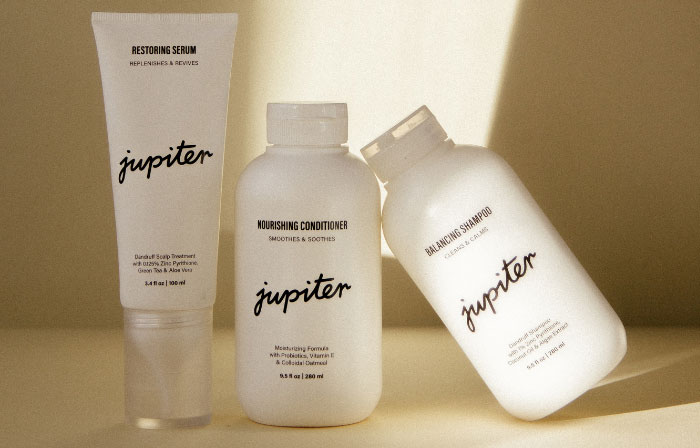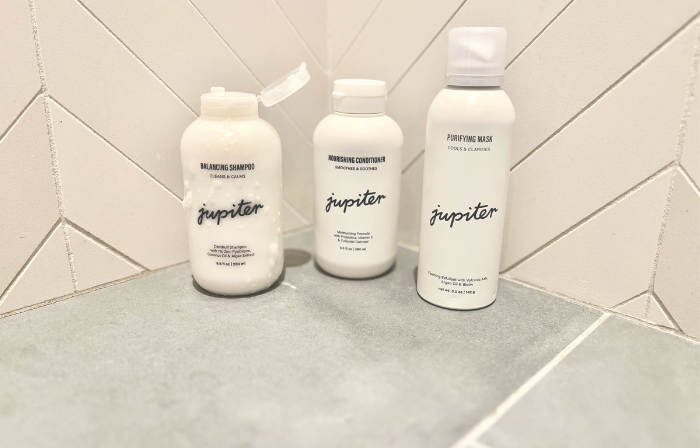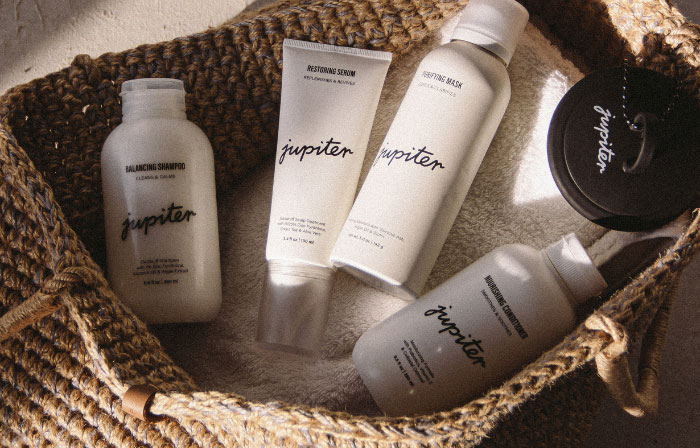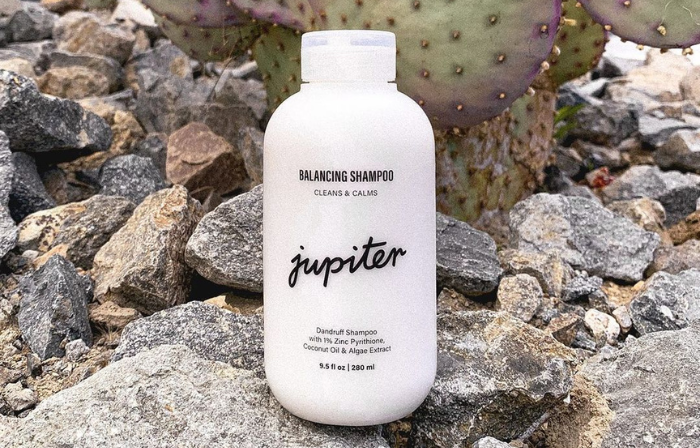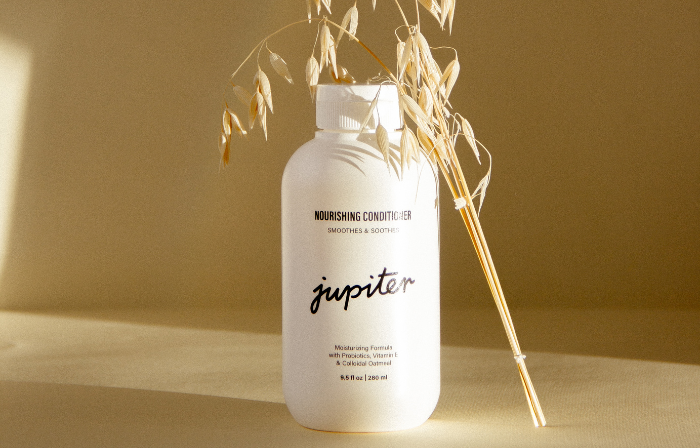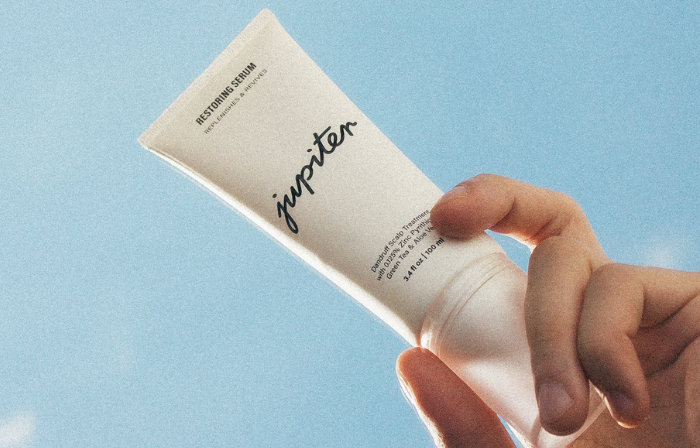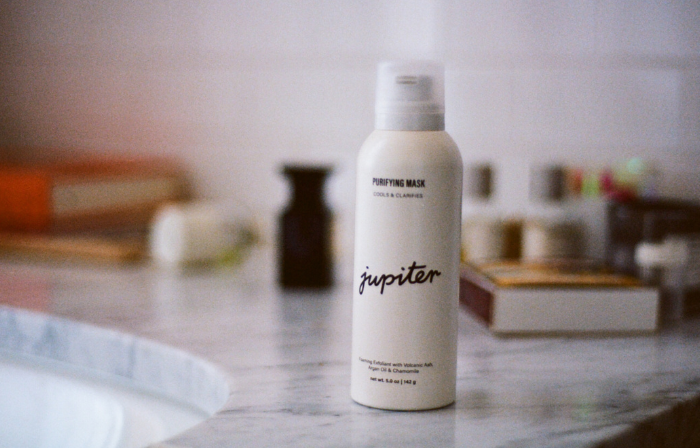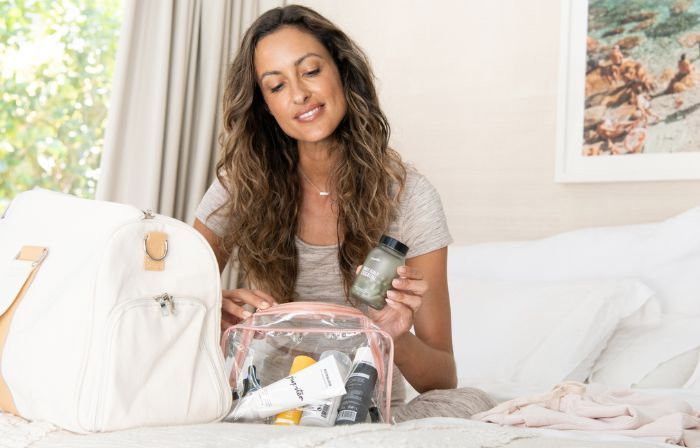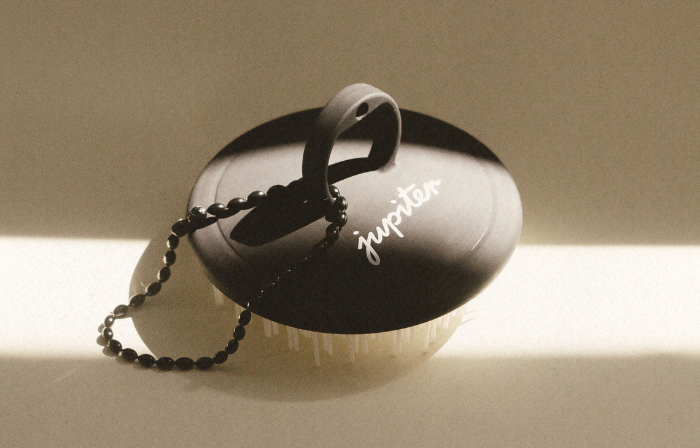As scalp and hair professionals, we’ve seen more than our fair share of hair care trends. It feels like every year, there’s some new strategy or viral hair care routine that gets everyone hitting the beauty shop to see if it will help them achieve their hair care dreams.
For some, these viral tips can be a game-changer. But for many, they can feel like a waste of time. Why does the batting average on hair care products and regimens seem so low? Well, the answer is simple: everyone’s hair is different. We know, we know, it may feel obvious. But when you look at the hair on a microscopic level, you’ll see just how much hair can vary from one head to the next.
Consider just how much your hair may vary on your own head! Many people have different curl patterns on the crown of their heads than those on their hairlines.
This brings us to our main topic for today: curl patterns and hair types. The not-so-secret truth is that once you start adapting your hair routine and product regimen to focus exactly on what your hair needs, you’ll start to see what it looks like when it feels its best.
What Are the Different Hair Types?
Let’s start with the basics. What are the various hair types? The most popular model for determining hair type was introduced in the nineties by a hair stylist who developed products uniquely suited for different hairstyles. That categorization method still persists today, though many have pointed out that it’s not without flaws. For one, it may still be too narrow even with four categories with subsections.
That’s why many have suggested a new method of identifying hair types that’s more inclusive. In this post, we’ll stick with the original model, which is still the most popular method of measuring curl patterns. But keep in mind, this method isn’t the only way to determine your personal hair pattern.
The hair curl pattern graph has four categories ranging from straight to tightly coiled hair, including subdivisions that speak to the hair's thickness.
Type 1A to Type 1C
There are subdivisions in each hair type category (A, B, and C) to help break a curl pattern down further, as simple categorizations like ‘straight’ and ‘wavy’ aren’t informative enough.
Type 1 hair is generally straight. Type 1A hair is stick-straight hair that won’t pick up a curl closer to its ends. On the other end of the spectrum of Type 1 hair is Type 1C hair, which is a bit more coarse in texture and might lay flat at the root but get a little wavy around the ends.
Type 2A to Type 2C
Type 2 hair is definitively wavy. Type 2A hair is fine and wavy, while Type 2C hair is coarse and slightly wavier.
The hair follicles that produce wavy, type 2 hair usually look like a small S, which is the same general shape that the hair strands will follow.
Type 3A to Type 3C
With the type 3 category, we start to get into loose curly hair. Loose curls can form ringlets, but they aren’t yet tight coils.
3A hair exhibits loose curls that will fall and lose shape when pulled. 3C hair is springier and will bounce back in an S or Z curl if pulled.
Type 4A to Type 4C
The last categorization is type 4 hair, which includes tightly coiled curls. The difference between type 4A and type 4C hair comes down to how small and tight the curls are. 4C hair is often a little more coarse as well.
Scientists are still working on understanding why some hair is curly and some is straight. There isn’t enough information to point to hair innately containing these qualities, suggesting that the shape of the hair follicle determines the curvature of a hair strand.
How To Decipher Your Hair Type
So now that we have a solid understanding of the four categories of hair types, let’s unpack how you can best decipher which one you have.
Wet and Wash Your Hair
When identifying your hair type, you want to make sure that your hair is clean. Products and build-up can weigh down your hair, altering its natural structure. Your first step is to take a shower and wash your hair (we recommend Jupiter’s Balancing Shampoo & Nourishing Conditioner to cleanse your scalp and hair, balancing the scalp and leaving your hair smoothed and softened). Take special care to be gentle with your hair when it’s wet, as you don’t want to pull it and damage it.
Let It Air Dry Without Brushing
You can use a wide-tooth comb or a scalp brush in the shower, but don't brush it after you step out of the tub. Our hair is at its most pliable when it’s wet. When you pull at it, you’re changing the way it dries. That’s why it’s so common for people on apps like TikTok and Instagram to post videos where they discover that their hair isn’t frizzy or wavy but is naturally curly. To determine your hair’s natural curvature, don’t brush it and let it fully air dry.
Examine Your Full Head of Hair
Once your hair is totally dry, get a mirror and see what pattern your hair strands are following. This will likely look different on different parts of your head. Many people have curls and waves on the lowest parts of their heads or near their temples. If you have curls, lightly pull on your hair strands and see if or how they bounce back. Does your hair feel fine, or does it have a thicker, coarser texture? Consider this a fact-finding mission to achieve your best hair.
Understanding Your Hair’s Texture
A common misunderstanding is that curl pattern is synonymous with hair texture, hair density, and hair porosity. While these are often linked and related, they’re all distinct characteristics. Hair texture is about the feel of your hair — are the strands fine or coarse? Hair density is the number of hair follicles and strands on your hair. When someone says they have ‘thick’ hair, they often mean that they have extremely dense hair and lots of it.
Hair porosity is about the hair's cellular structure, which we’ll discuss in detail below.
Genetic Information on Hair Texture
One of the major influences on your hair’s natural texture is your genetics. If your parents have curly hair, you are far more likely to have curly hair than a person whose parents both have straight hair.
Ethnicity can also play a key role in a person’s natural hair. Evidence suggests that the genes responsible for determining a person’s hair curl pattern vary from place to place. For example, Asian people’s DNA includes two genes related to hair thickness. People with Northern European ancestry have a version of that gene expressed differently.
Hair texture can also change slightly over a person’s life. Many people experience their hair becoming more coarse as they age, which is often tied to a drop in melanin and sebum, leaving hair drier and slightly more brittle.
When identifying your hair type, you want to make sure that your hair is clean. Products and build-up can weigh down your hair, altering its natural structure.
Porosity and Damage: What’s the Link?
The other factor that is related to hair type is hair porosity. Hair porosity determines how much hair strands can absorb and retain moisture. While we often think of hair as a solid substance, the reality is that, like skin, hair strands are porous which allow water and other products to flow in and out of the hair shaft.
Your natural hair porosity is determined mostly by genetics, but lifestyle factors can play a role. UV damage has been proven to increase the porosity of hair shafts, making them more vulnerable to damage. Chemical treatments like hair dyes and bleaches can also make your hair more porous.
The problem with high porosity hair is that it desperately needs moisture and hydration but can’t hold onto it. Moisturizing products flow in and out, leaving hair about as dry as before.
How Do I Know What My Hair Needs?
Understanding the science behind your curl pattern, hair texture, and porosity is so important. Once you’re clear on what your hair is like at a microscopic level, you can build a hair care regimen and product lineup that best suits its needs and supports a healthy scalp.
Tips and Products for Curly Hair
The amount of moisture on the ends of your hair is often, though not always, linked with your curl pattern. Simply speaking, it is harder for sebum, your scalp’s natural hair oils, to travel down curly hair strands, leaving your ends dehydrated. You’ll notice that many products advertised for people with curly hair include hydrating oils and natural moisturizing agents like aloe vera juice. That’s because curly hair is often more porous, so it needs harder-working ingredients to get the hydration it needs. To that end, ensure that your hair care routine isn’t inadvertently harming your curls. Over-washing your hair can be particularly damaging for those with curly hair, as can heat styling. If you ask us, we think you should embrace your curls and find ways to feed them the moisture they crave.
Tips and Products for Wavy Hair
Like curly hair, wavy hair is more porous than straight hair. It often requires more moisturizing products and less washing.
As a general rule of thumb for wavy hair, try to build a consistent hair care routine. When you notice that your hair feels dull and limp, wash it and clear away build-up with an exfoliating scalp brush. Do a deep conditioning mask to increase your hair’s hydration levels when it feels dry and brittle.
Tips and Products for Straight Hair
Lastly, you often deal with oiliness and limp hair when managing straight hair. Many people with straight hair find difficulty getting their hair to hold a curl because most of the moisture from products, sweat, and sebum is sitting right there on the hair strand. Straight hair is less porous than wavy and curly hair.
You may want to improve your washing routine to keep your scalp balanced and your hair clean. But do take care to use a gentle and mild shampoo. We understand that when your hair feels greasy, you want to do anything you can to reduce moisture.
But, too many shampoos contain harsh chemicals like sulfates, which strip the scalp of its natural oil and can leave it feeling irritated and itchy. Some oil is good! Similarly, try to avoid a dependency on a product like dry shampoo. While dry shampoo is often effective at delivering more volume and soaking up some of that grease, that product just sits on your scalp and hair strands and will eventually lead to serious build-up, not to mention your hair feeling weighed down and limp.
Tips and Products for a Flaky Scalp
While not totally related to your curl pattern, flaking of the scalp can be caused by both dry or oily scalp. An under-production of oil on the scalp leads to dryness that can lead to powdered sugar-like flakes. On the other hand, oily flaking can be caused by conditions such as psoriasis, dandruff, and seborrheic dermatitis.
Those with straight or wavier hair may notice flakes close to the scalp that make their way down the hair strands, while curlier hair patterns will see flaking closer to the scalp. The best way to combat those pesky flakes is with a professionally formulated anti-dandruff shampoo and soothing conditioner to get at the root of flaking and soothe the scalp.
The Perks and Limits of Categorizing Hair
Once you start going down the route of personalizing your hair care regimen with the hair type system, you’ll notice its benefits and pitfalls. While the hair type system can help get you closer to your best hair, it is not the be-all and end-all of personalized hair care. It’s just one of many factors that can determine your hair’s health and appearance.
Outside of hair type, the health of your scalp has a huge impact on your hair. Environmental factors like the time of year and how much pollution is in the air around you, your hair styling regimen, the products you use, internal wellness elements like stress levels, and your diet can all impact your scalp health and in turn the health and moisturization of your hair strands.
As a general rule of thumb, if you treat your scalp health as an extension of your health, you’ll be in a good place to give it what it specifically needs to grow healthy hair.
Think about it like this. When you start breaking out, you might start using hydrocolloid patches to soothe your spots’ irritation. When you have a tummy ache, you might drink ginger tea. You might focus on restoring your gut health when your digestive system is suffering. Wellness is always specific to an individual’s needs, and there is no one-size-fits-all solution. At the end of the day, reactive care and proactive care are some of the best ways to address the health of your body and mind — your scalp and hair are no different. Some practice, patience, and a little TLC go a long way.
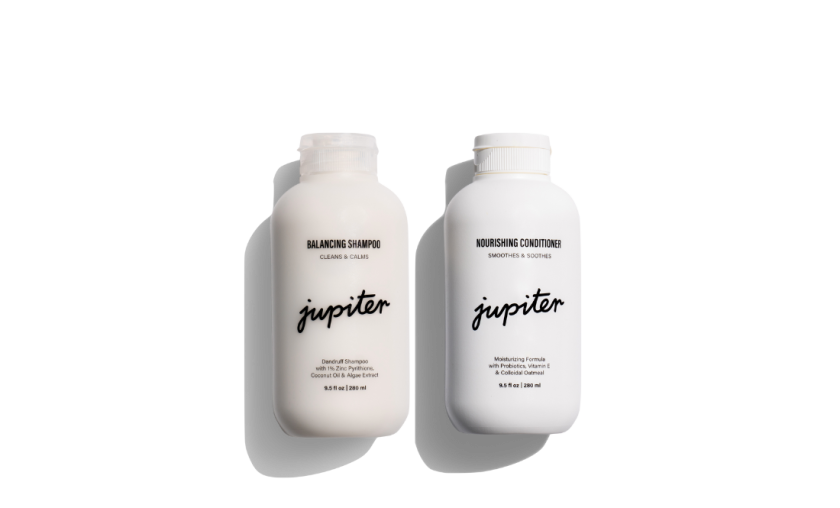
Our best-selling duo! The medicated Shampoo tends to your dandruff while the Conditioner’s combo of colloidal oatmeal and coconut oil moisturizes your scalp and hair. Safe for everyday use. Check out the Advanced Oil Control Trio if you flake on the regular and could use a bit more control.
Travelling? Check out our Weekender Capsules for on-the-go scalp care.
